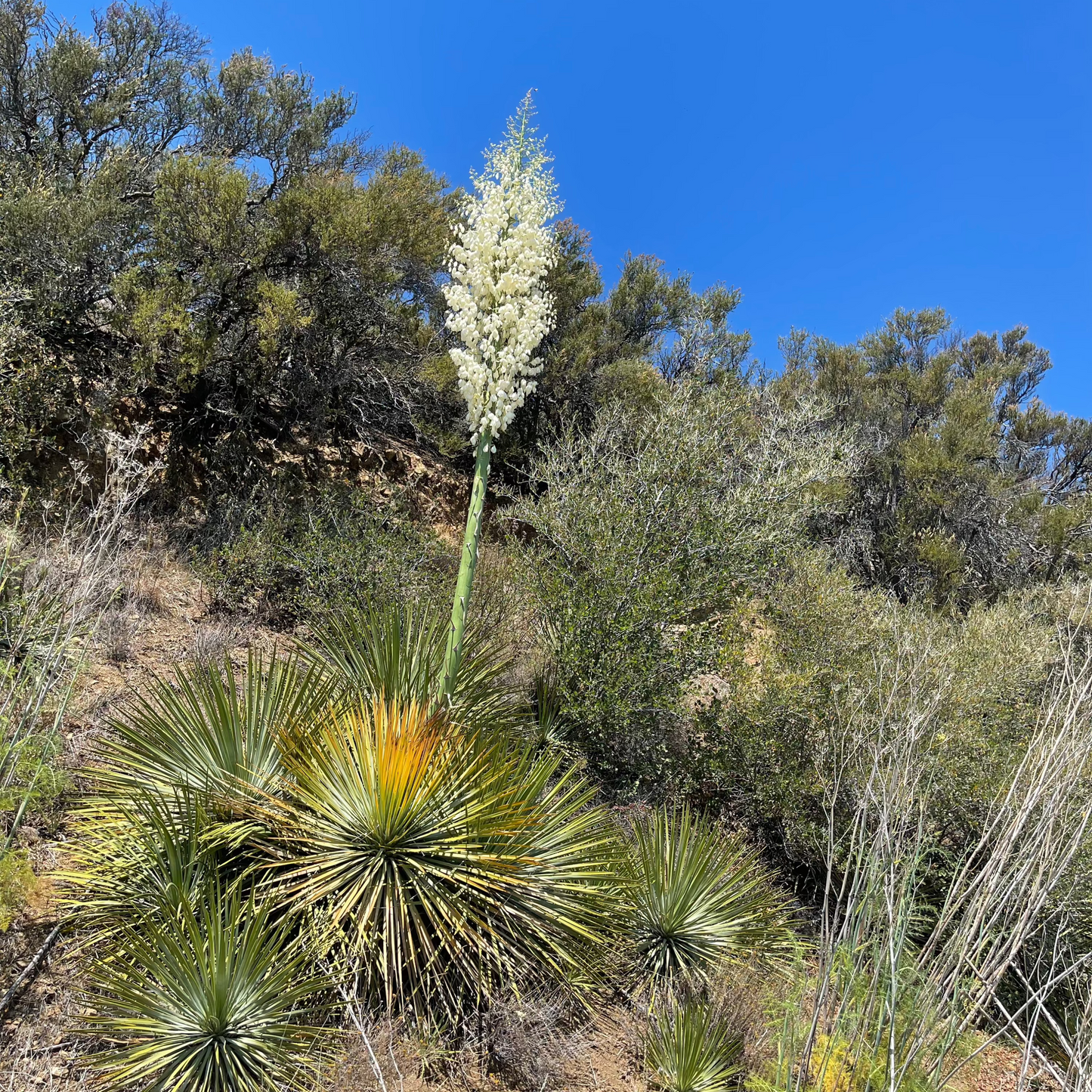Chaparral Yucca (Hesperoyucca whipplei)
Chaparral Yucca (Hesperoyucca whipplei)
Couldn't load pickup availability
Chaparral yucca (Hesperoyucca whipplei) is a striking, drought-adapted plant known for its dramatic presence year-round and spectacular flowering display. The plant begins as a large, rounded rosette of silver-green, spiky leaves. When mature — typically after 5 to 6 years — it sends up an impressive flower spike that grows 10 to 15 feet tall in just a few weeks. The towering spike is covered with hundreds of bell-shaped flowers, ranging from white to pale purple, creating a stunning visual impact in the landscape.
Native to California and parts of Baja California, chaparral yucca thrives in chaparral, coastal sage scrub, and oak woodland plant communities at elevations of 950 to 8,200 feet. It is well-adapted to rocky, dry soils and plays an important ecological role in its native habitat.
Chaparral yucca forms an exclusive pollinator relationship with the California Yucca Moth (Tegeticula maculata), making it a fascinating example of co-evolution. The moth is the plant's sole pollinator and relies on the yucca for its life cycle. The moth collects pollen from the flowers and deposits it on another flower’s stigma while laying its eggs inside the ovary. The developing moth larvae feed on some of the yucca seeds, while others are left to grow and disperse.
After the flowers are pollinated, the yucca plant dies, a process known as monocarpic reproduction. However, the dried flower stalk often remains standing for several years, creating a natural sculpture in the landscape. New plants emerge from seeds or from offsets at the plant’s base.
Chaparral yucca is also known by several common names, including our lord’s candle, Spanish bayonet, Quixote yucca, common yucca, and foothill yucca. Despite its beauty, it is reportedly difficult to grow outside its native range. However, when planted in the right conditions, it provides a bold accent in native gardens, particularly when combined with rocks or other drought-adapted plants. Care should be taken to place the plant away from pathways, as its sharply pointed leaves can cause injury.
This iconic plant is a resilient symbol of California’s rugged chaparral landscapes, offering both ecological value and ornamental appeal.
| Bloom periods | Spring |
|---|---|
| Ecological benefits | Drought tolerantDeer resistantAttracts pollinators |
| Ecological function | HedgeLiving Fence |
| Lifespan | Perennial |
| Skill level | Beginner |
| Sun exposure | Full |
Share


